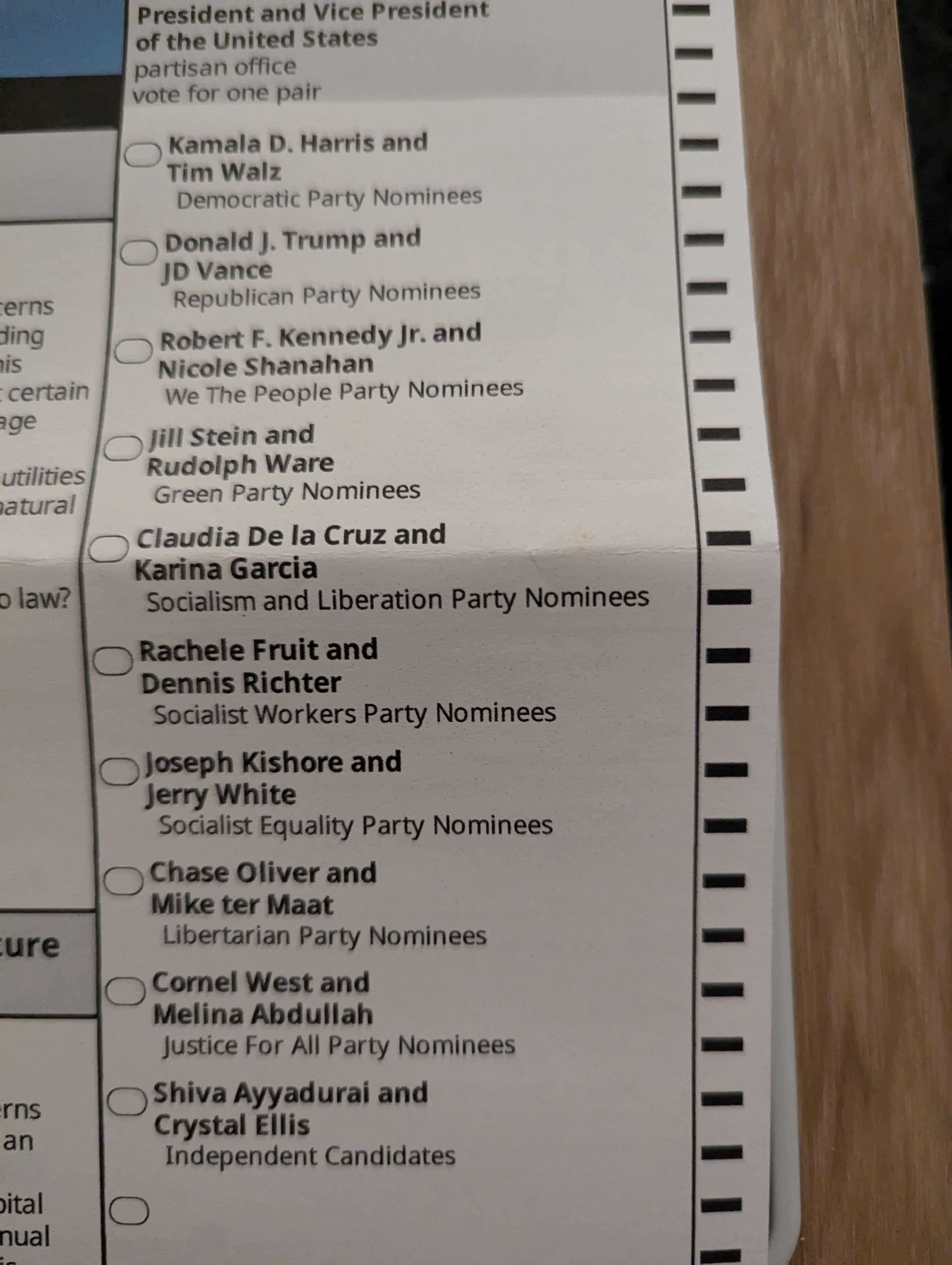this post was submitted on 26 Oct 2024
75 points (73.9% liked)
Asklemmy
43946 readers
544 users here now
A loosely moderated place to ask open-ended questions
If your post meets the following criteria, it's welcome here!
- Open-ended question
- Not offensive: at this point, we do not have the bandwidth to moderate overtly political discussions. Assume best intent and be excellent to each other.
- Not regarding using or support for Lemmy: context, see the list of support communities and tools for finding communities below
- Not ad nauseam inducing: please make sure it is a question that would be new to most members
- An actual topic of discussion
Looking for support?
Looking for a community?
- Lemmyverse: community search
- sub.rehab: maps old subreddits to fediverse options, marks official as such
- [email protected]: a community for finding communities
~Icon~ ~by~ ~@Double_[email protected]~
founded 5 years ago
MODERATORS
you are viewing a single comment's thread
view the rest of the comments
view the rest of the comments

A combination of first-past-the-post and winner-take-all systems for nearly all elections, coupled with the Electoral College for the presidency.
First-past-the-post is a system wherein only the plurality candidate wins. Here is an example:
For a given seat, be it a president, senator, representative, or local office, assume Party A wins 40%, Party B wins 30%, Party C wins 20% and Party D wins 10%.
Despite a majority of voters preferring someone other than Party A, Party A wins and everyone else loses. This is first-past-the-post voting, and with no other considerations given to the other votes, makes it a winner-take-all system.
The majority aren't happy with this, but the other parties continue running their candidates and continue losing because Party A wins the greatest portion of votes each time.
Because the other parties can't even win any power, there's no "coalition" or "alliance" that can be made to shut out Party A.
Party B decides to take advantage of everyone's dissatisfaction. They adjust some of their policies to be more favorable to Parties C and D to attract some of their voters. This is the closest thing to a "coalition" that the first-past-the-post system can achieve.
During the next election, Party A wins 40%, party B wins 42%, Party C wins 12%, and Party D wins 6%. Party B assumes office, starts fulfilling their agenda, a lot of their voters aren't completely happy, but at least Party A isn't in power.
This illustrates how only 2 prevailing parties come to be, because it is not possible to win an election in the US unless you obtain the most votes.
For the presidential election, the electoral college is a winner-take-all system determined by the limited pool of national electors.
Like all other offices, the presidential election is still first-past-the-post. Only the candidate who wins the most votes wins the election, everyone else wins nothing.
For the presidential election, the only votes that matter are the electoral votes. Each US state is assigned a certain portion of electors which is based on population but is often very disproportionate in practice (due to a capped elector total nationally, and minimum elector thresholds for less-populous states).
Each elector is 1 vote for the president, and the electors are supposed to vote based on how the citizens of that state voted. This is the distinction between the electoral vote and the popular vote.
With limited exception, this is also a winner-take-all system, meaning all the electors for a given state must also vote in line with one another. If a state has 10 votes and the election is 51% Party A and 49% Party B, all 10 electors must vote for Party A even though it's almost a clean split down the middle for the popular vote.
This results in cases where even if a majority of voters nationally prefer Party B, Party A's candidate could still win because they won more electors.
Accepting the system is unfair but being unable/unwilling to change it, the two prevailing parties try to game the system any way they can to swing things in their favor. They identify a handful of states where leads are very narrow and focus all their attention there. These are swing states.
Why do people hate third parties/why do they never win?
For the reasons illustrated above, a third-party can never win any significant amount of power under the current system.
When a race is even remotely close, small factors like people who choose to vote third-party instead of supporting one of the other two parties can turn the tide in a swing state, and thereby turn the tide nationally.
There is a trend of third parties getting financial/promotional support from political groups that are actually opposed to their policies, but are using the third party to attract votes away from their main competition for a given seat. This is called the spoiler effect.
This outlines how, under the current political structure of the US, there can never be a successful third party in government outside of local grassroots elections, and why there is so much hostility towards third parties. Third parties aren't there to win, they are propped up by larger political interests who use them to take votes from their competition.
This is why you may often see "A vote for a third-party (e.g. Jill Stein) is a vote for Trump" during this election, because the Green Party is being primarily supported by right-wing interest groups this election despite being one of the more "leftist" options on paper.
This was an excellent breakdown of the American elections system, thank you